Meet Our Experts!
The PSG is very honoured and exceptionally proud to have some field experts and published authors within our group. Members get the opportunity to hear talks from some of our experts and to chat personally with them at our twice-yearly meetings. Our experts also contribute to the group's excellent publication Phasmid Studies and occasionally the PSG Newsletter.
| Ian Abercrombie | Ed Baker |
|---|---|
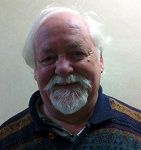
Entomological Autobiography, October 2015 [Note: It is with great sadness we advise that Ian pased away 20th February 2016 after a short battle with cancer. He will always be remembered for his happy, friendly demeanour and huge contribution to the PSG. RIP Ian Abercrombie 26.1.47 - 20.2.16]. I was born in a prefab in Dover, in January in 1947, the coldest winter of the 20th century. One of twins, my brother Reg had little interest in natural history other than what could be shot, fished, snared, cooked and eaten. I was very different and during my childhood had many pets: a dog, cat, budgie, tortoise and anything else that my parents would let me keep. My first invertebrates were "monkey peas" - the east Kent name for pill millipedes. These were abundant in the warm south facing down were we lived, my mother told me I was always taking them to bed with me! When I left school at the age of fifteen, I went to work underground in the Kent coalfield as a trainee miner but left just after I was sixteen and took an apprenticeship with the parks department of Dover district council. In 1969, I was appointed head gardener on a small country estate near Great Chart in Kent and worked their for many years making the the garden. I left in 1989 and went freelance and retired when I was 67, but I still do a little work for friends. My first encounter with stick insects was of course Carousius morosus. Mr Stubbings, our rural studies master, had a large cage full at our secondary school [punishment often consisted of half an hour sorting the eggs out!]. Mr Stubbings gave me some and I kept them at home for many years. My wife was also asked to look after some school stick insects by another of the staff members during the holidays and I was amazed because these stick insects had wings! [pink winged]. I then bought a small book on invertebrates and found that there were a few more species of stick insects and I tried to get some but the eggs I received were not all that viable and I decided instead to go to the AES exhibition at Kempton park, where there I discovered the the PSG and duly enrolled, I think think it was 1987? Although I did not attend the meetings at the museum for a year or two, I have not missed a meeting since 1989. At the PSG, I found that we had 27 species in culture but some were very tentative and not freely available. After breeding Hereropteryx, I really wanted to breed Haaniellas but could not get any eggs since, although they had been brought back to England a couple of years before, nobody was breeding them with any success. So when, in January 1991, Phil Bragg asked if any members would like to go to Borneo with him and his then girlfriend I jumped at the offer! It was a very good trip and we found many species and I brought back several species of Haaniella which I bred and brought into general culture [I had observed that they were never found far from water and provided them with a shallow tub to bathe in]. Since then I have been back to Borneo many times and also to peninsular Malaysia, Java, Sumatra, The Philippines and several islands in Indonesia, where I have found hundreds of species of Phasmid and have seen many wonderful creatures in the rain forests of south east Asia. The PSG has been a great society for me, I have made some wonderful friends from all over the world and in particular Professor Francis Seow-Choen and his delightful family (who I always stay with in Singapore and whom I have done a great deal of collecting with) and Allan Harman, a great all-round naturalist who has been a great mentor for me, plus all the nice members - all of whom, I hold in great regard. |

Summary, October 2015 Edward Baker ARCS AMInstP is a Sonic Biologist at the Department of Entomology, Natural History Museum and also an Informatics Advisor at International Commission on Zoological Nomenclature. Ed is also an Assistant Editor working with fellow PSG-member Paul Brock on the Phasmida SpeciesFile (taxonomic database of the world's stick and leaf insects). Ed's interests are divided between the orthopteroid insects (in particular the stick insects and cockroaches) and Biodiversity Informatics. He currently works on the eMonocot and ViBRANT projects at the Natural History Museum, London. In addition Ed is editor of Cockroach Studies and Invertebrate Rearing. Ed is a keen blogger and has written many phasmid articles, a full list of his publications is listed on his website: http://ebaker.me.uk/biblio. |
| Phil Bragg | Paul Brock |
 Summary, October 2015 Summary, October 2015Phil Bragg (former Phasmid Studies editor) In 2008, Phil described the current World's Longest Insect, Phobaeticus chani ! More bio coming soon... |
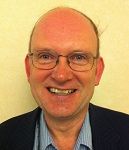
Entomological Autobiography, October 2015 From the age of three, I used to wander around the back garden of our house in Slough, Berkshire, finding caterpillars, bees etc. and bringing them into the house. I have always been interested in wonders of the natural world, insects in particular, and first kept phasmids from the age of 10 - wondering what these strange creatures being sold by Worldwide Butterflies were really like. When it came to leave school at 16, I had to wait for an offer to join a pest infestation laboratory. They were not certain finances would allow for another trainee, and I saw an advert for a Bank clerk and was signed up immediately. Needless to say, the laboratory job was offered days later! This started many years of juggling between a full-time job, breeding, and writing articles, papers and, much later, books on insects. I had just started work when I won first prize in the Teen International Entomology Group [TIEG] writing competition, second prize in the drawing category; my colleagues in the bank were most impressed with the U.S. dollar cheque, which was invested in entomological equipment. At this stage, I used to keep butterflies, moths, beetles and stick insects and had a growing collection of just about everything. Whilst Carausius morosus [PSG1] was my first phasmid in culture, nymphs of P. macklottii [PSG2] and S. sipylus [PSG4] soon turned up from Worldwide Butterflies and I was really hooked on phasmids when the amazing nymphs of E. tiaratum [PSG9] emerged. Many species followed (live and dead), from PSG sources, contacts abroad - too numerous to mention, or collected from various countries; often exchanges were made in the days when e-mail never existed and one used to have to wait patiently for replies to correspondence. Visits to the Natural History Museum, London started in about 1974, with Judith Marshall showing me a selection of cabinet drawers. Whilst the collection became of source of inspiration, it was also frustrating that some species could not be identified. So I started studying taxonomy and was soon describing species new to science! I kept about 40 phasmid cultures going at one stage, although this involved picking bramble every weekend, and spending much time maintaining the cultures. This has gradually diminished as my taxonomic work increased and nowadays I tend to keep one or two species I am working on. In the last ten years, my collections of specimens and books (except phasmid related) have mainly been distributed or sold. In the last few years I have donated part of my phasmid collection to the Natural History Museum. It has been a pleasure attending most PSG meetings since the Group was formed in 1982 and all Amateur Entomologists' Society annual Exhibitions since 1968, giving me the opportunity to talk about insects with numerous enthusiasts. During the 1980s-2006, I visited many of the important collections around the world and my photographs of type specimens are gradually being uploaded on my taxonomic website, the Phasmida Species File (PSF) http://phasmida.speciesfile.org/. The task of updating this site is so vast, it contributed to the decision in April 2008 to take very early retirement from my job and move to Brockenhurst, Hampshire, in the New Forest National Park. I hope that my several books on phasmids have encouraged more interest in the subject as there was little or nothing available in my early years of interest. My favourite is the 'Amazing world of stick and leaf insects' (1999, AES) which has proved very popular. Apart from the on-line monograph (PSF), I have enough projects to keep me active for years in the perfect surroundings of Brockenhurst, well known for entomologists since Victorian times. |
| Ian & Mark Bushell | Janine Fletcher |
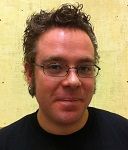
Summary, October 2015 Ian and Mark Bushell have been members of the PSG for a long time and both have in-depth knowledge of phasmids. Ian is the current PSG Livestock Co-ordinator and Mark is currently Assistant Curator of Invertebrates at Bristol Zoo Gardens and has a wealth of knowledge regarding phasmids and other invertebrates. |

PSG Autobiography, October 2015 I remember clearly at the age of four carefully rescuing caterpillars from my dad’s cabbage plants before he sprayed them with insecticide, our poor neighbour probably thought a plague had descended upon him as I used to tip all the rescued caterpillars from my seaside bucket over the fence into his garden. It was also at the age of four that I decided I wanted to be a Veterinary Nurse when I grew up. Soon afterwards I started keeping some of the caterpillars I’d collected, feeding them up and watching them pupate and finally emerge as butterflies or moths. I also remember being enthralled by a lovely lady from Marlow whom I’d seen on Blue Peter. She kept Death’s Head Hawk Moths, and after writing to the BBC television centre for her address, I got in touch with her and managed to persuade my parents to take me to her home in Marlow to collect some of the wonderful caterpillars for me to rear at home. For my eleventh birthday I received my own plastic greenhouse, large enough for me to walk in and admire my collection of butterflies and moths, some I’d reared from eggs or caterpillars, others I’d collected from the disused railway embankments with the butterfly net I’d made. My interests weren’t confined to just Lepidoptera, but also woodlice, snails, millipedes, almost anything I could collect in our garden or home, even silverfish collected from our kitchen floor at night were kept as pets in a sandwich box on a layer of tissue, and fed on biscuit and bread crumbs. My mother was less keen on the cockroach I brought home after school swimming lessons, which I’d rescued from drowning in our local swimming pool. It was from primary school when I was about nine that I got my first stick insects – Carausius morosus (PSG 1) from the reception class teacher. I had already visited Worldwide Butterflies at Sherborne in Dorset, and was able to get some Extatosoma tiaratum (PSG 9) from there to add to the collection. I was also by this time collecting other creatures such as newts and slow worms, and to this day my parents' pond is still home to a thriving colony of Common Newts. By the time I was a teenager I had a Saturday job in a friend’s craft supply shop and taught myself how to make earrings, which I sold to my friends at school. I could now afford to buy a vivarium and my first pet snake. At the age of fifteen I changed jobs, and now started work at a local veterinary surgery on Saturdays and one evening each week. I studied hard at school and got the O levels I needed to train as a veterinary nurse having already been offered a full time trainee position at the practice in which I worked, and after three years including two terms block release at Berkshire College of Agriculture, I passed my final veterinary nursing exam with credit in June 1986. I then went to work at the P.D.S.A. for two years before getting a job as veterinary nurse at Bristol Zoo. At the zoo I had the opportunity to hand rear orphaned babies including a Black Lemur and two Maras amongst others. I also enjoyed working with lemurs, marmosets, tamarins and colobus monkeys, which I cared for every other weekend and nocturnal prosimians and macaques on a daily basis. I left Bristol Zoo in 1989 shortly after getting married, and have since worked in several different small animal and equine practices as Head Nurse. I currently work as Head Nurse at one of the branches of a five centre small animal hospital and referral practice in Bristol. I have always enjoyed caring for a wide range of animals at home and at work, and particularly enjoy hand rearing orphaned neonates, including hedgehogs, squirrels, rabbits, mice, kittens, Little Owls and a puppy. My stick insect collection has also grown dramatically over the years, especially after joining the PSG in February 1994, and at one stage I had over fifty different species. I started attending the PSG meetings regularly, and in January 2002 I became the Livestock Co-ordinator. My invertebrate collection now includes, mantises, millipedes, cockroaches, cave crickets and a spider, some of which come with me when I do mini beast talks at local schools. I also enjoy meeting and talking to people at the different events I have helped at including Bristol Zoo, Exmoor Zoo and Slimbridge Wildfowl and Wetlands Trust all under the PSG umbrella. My other hobbies include photography, bird watching and wildlife watching holidays, and so far I’ve been lucky enough to travel to Madagascar, Australia, India, Kenya, Tanzania, Rwanda, Borneo and Ecuador including the Galapagos and the Amazon. I would like to spend more time on these hobbies so as from January 2010 I stood down as Livestock Co-ordinator, but still have a keen interest in phasmids, and continue to support the PSG and attend the meetings, which I very much enjoy. |
| Allan Harman | Tony James |
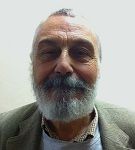
A Life in Entomology I joined the Amateur Entomologists’ Society in 1954. In those far off days exotic insects both live and dead were somewhat uncommon. There were only four or five species of stick insects in culture; Carausius morosus, Bacillus rossius, Clonopsis gallica and Pseudodiacantha macklottii (then known as Orxines macklottii). The latter species was in culture in the Insect House at London Zoo. Very occasionally another species would appear in dealers’ lists- I well remember seeing an advertisement for Acanthoxyla prasina and paying a few shillings (pre-decimal currency) for a dozen eggs. Needless to say these never hatched. The only freely available exotic insects were silkmoths such as Attacus atlas, Actias selene, and other species. I spent a few years rearing C. morosus and B. rossius or C. gallica and in 1959 I was called up for National Service and on my induction documents I entered my interests as “Entomology". After basic training I was sent to the Royal Army Medical College at Millbank, London to study medical entomology. In those days Britain was heavily involved in researching insect borne diseases in the former colonies. After some three months I was posted to the Far East School of Health at Nee Soon, Singapore. I was very fortunate to be sent there as I was more or less left alone except the odd sentry duty or Fire Piquet. Whilst on Fire Piquet I saw my first leaf insect, a male flying around the perimeter lights. I used to spend a great deal of time looking for insects and other beasties in the local area. I did find Lonchodes brevipes and Phaenopharos struthioneus though efforts to rear them were not successful. I did not have a great deal of success in rearing stick insects and after being demobilised and returning to England I decided that I would give up tropical entomology and concentrate on British and European insects. This situation came to an end in the early 1960s when I met Judith Meadows at the British Museum (Natural History) – now the Natural History Museum . She later became Judith Marshall and kept a veritable menagerie in her lab space in the Entomology Department. I also met Bob Humphries and George Ashby at the Insect House at London Zoo. By offering other livestock I obtained Orxines macklottii (now Pseudodiacantha macklottii). This striking insect thrives in a humid atmosphere and being fed on Rhododendron. A number of other species occurred from time to time including Bactrododema tiaratum from Zimbabawe. I saw the culture once but it was subsequently stolen. During the 1970s many new species were bought into culture including Lonchodes brevipes, Ctenomorphodes briareus (now Anchiale briareus). A number of these cultures were very tenuous, though there were an increasing number of enthusiasts. In 1971 I went to Papua New Guinea and managed to bring into culture Eurycantha calcarata and Anchiale maculata. At the time E. calcarata was the most spectacular and most sought after species. During the later 1970s and 80s Mary and I spent every year travelling and collecting as many stick insects as possible. Not all the species made it into culture and I feel that a lack of expertise was the cause, that I hope has now improved. After a few years of not collecting we resumed and collected from regions not previously visited. By this time Tony James and others had formed the PSG. I must stress that I was in no way involved in this event. In moving into the 21st century many more people have become active in field trips and many new interesting and exciting species are now in culture. I should like to finish by stating that the PSG has in 25 years achieved through members' efforts the greatest advance in phasmid taxonomy and ecology. May it long continue. |
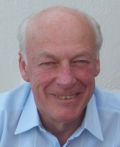 Entomological Autobiography, November 2015 Entomological Autobiography, November 2015Tony James (Founder of the PSG & First Editor / Coordinator) My interest in entomology (although I couldn’t then say the word) started when I was around 6 years old, when I used to play in the small garden where my mother steadfastly grew a range of flowers, in spite of us living in an industrial area in South Wales. I was fascinated by the strange tiny creatures which appeared there and would watch them engrossed whenever I found one. My interest was encouraged by the family to learn more about them, and many library books were avidly read to find out more about them. Even in junior school, it seems that my interest was well known, and I remember being sent to a nearby classroom to another teacher, who showed me a large white caterpillar spinning silk in a paper envelope and he asked if I knew what it was. It turned out to be a Silk-moth larva, Bombyx mori and, as time went by, I began to save up any birthday money gifts to follow that interest. This was mainly due to getting a price list from the Butterfly Farm in Bexley, Kent, then run by a well-known entomologist, L.H.Newman, who was also a radio celebrity of the day. One of the few school trips we had as juniors was a coach trip to Bristol Zoo, and inevitably my interest focussed on the Insect House. A fascinating display in one corner caught my eye as it contained live Insects which looked like small sticks (I now know that they were Carausius morosus), something that I’d never seen before. I little realised that this would be the beginning of a life-long interest, and later lead to a large group of other enthusiasts. Years later, having moved to Cornwall, and focussed on my work as a Design Engineer in Satellite Communications, and now with my new wife Pat, any entomological interest became secondary for a while. On a visit by us to my sister in Gillingham, Dorset, in the late 1970’s, we passed a place just outside Yeovil, Worldwide Butterflies, which rekindled my interest in stick insects as some species were listed in their livestock. I purchased and successfully reared four species, and discovered that I had far too many in the second generation. I offered the surplus insects in the Exchange & Mart, just charging the postage costs, and quickly built communications links with many people and schools. Ten of us formed the new Phasmid Study Group (PSG), and I published the first of a series of newsletters in 1980. At the time, on a visit to London, I contacted Bob Humphries at London Zoo and a quiet, young lady at the Natural History Museum, Judith Marshall, who I’m sure you now all know very well! The PSG quickly gathered members, often by word of mouth communications, and amazingly we had an unusual mix of amateurs and academics, all working together which has been greatly successful. Throughout the years following, most of Pat and my holidays became focussed on going to places where phasmids were either reported or likely to occur, and over 30 years we have returned with live culture material from many places in the world, some of which are established in the PSG Culture List, and are reared now across Europe via associate groups. However, as the PSG acquired more members who also travelled mainly to the Oriental region, I decided to concentrate on the Neotropical region in the Americas, and we have visited 10 Caribbean Islands and three Central American countries, often a number of times to each, and discovering many species. Although it’s now getting more physically difficult for us, we are still searching Neotropical areas when we can. Our interests are still very wide, so many other entomological orders are just as interesting for us, so our visits look at everything we can. For anyone interested, I have been putting albums of places we have visited and the wildlife we have seen together at http://www.ipernity.com/aj-worldwildlife I am very pleased at the way the PSG has developed over the years and I hope it will go on for many years yet. Many of the members are valued friends, which also makes it all very worthwhile. Good luck to everyone for the future! |
| Judith Marshall | Francis Seow-Choen |
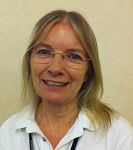
Entomological Autobiography, October 2015 As a child I was always interested in natural history, insects in particular, and continued my interest by obtaining a BSc in Zoology, with Entomology as my special subject. This enabled me to apply to the NHM (or British Museum (Natural History) as its title was then) saying I was particularly interested in working on beetles, bees & wasps or flies – and was offered a job on grasshoppers and allied insects! I started in August 1964 thinking I’d try this for a year or so, and soon became very attached to the study of all orthopteroid insects. I had kept Carausius morosus [PSG1] as a student, but was delighted to find more interesting species available at the NHM, P. macklottii [PSG2] and S. sipylus [PSG4] to start with. Staff at the NHM have always had a good relationship with staff in the Insect House at London Zoo, as Allan mentioned (Newsletter 114:13). E. tiaratum [PSG9] was distributed by Bob Humphrys after rearing eggs which Andrew Low (an amateur with world-wide contacts) obtained from Queensland. In 1970 I received eggs of C. phyllinus [PSG11] from a colleague in Brazil; he told me they fed on Mimosaceae, which I grew specially – only to find they ignored it but were very happy eating bramble, as were so many of the early cultures. Allan Harman provided many more species from his collecting trips, and I kept as many cultures going as possible although this involved picking a binbag full of bramble every weekend, and spending much spare time maintaining the cultures. During the 1970s many of the NHM visitors were to be early members of the PSG. John Clark Sellick came to examine the eggs of stick insects, Paul Brock commenced his visits to work on the collection, David Robinson who also has wider Orthopteroid interests, and Tony James who in 1980 came up with the idea of starting a newsletter for fellow phasmid fanatics, and thus forming a society named the Phasmid Study Group. From 1982 we started holding regular meetings, here at the NHM which I was able to arrange, and also at the Centre for Life Studies, London Zoo, organised by Peter Curry. Since its inception many other members of the PSG regularly visit to study the collection and add to it with both wild-collected and cultured material, Phil Bragg with his Bornean studies, Chew Lun Chan (whose collection we have obtained for the NHM), Frank Hennemann and Oskar Conle, to name but a few. As the PSG expanded and many more people were keeping cultures I cut down on my stocks, and as Pest Control measures were put into place within the NHM in the 1990s livestock was banned from working areas. Live insects were permitted only in the North West Tower so that I now maintain only limited livestock at home. The Collection at the NHM is of prime importance because of its size and historical range, which means we have many visitors from around the world. I consider myself privileged to have met so many interesting people over the years. |

Entomological Autobiography, October 2015 Dr Francis Seow-Choen MBBS, FRCSEd, FAMS, FRES is, by profession, a senior colorectal surgeon but is also a very committed amateur naturalist. He had been avidly interested in natural history as long as he can remember. During his school days, weekends were spent at the Raffles Museum or the Johor Zoo sketching animals. Time before and after school was spent looking for all sorts of animals in the fields, swamps and rivers around the Kallang River in Singapore near where he lived and attended school. Dr Seow-Choen first started rearing phasmids as a young boy. These phasmids were popular then as their droppings were used as a type of Chinese remedy. He started serious phasmid research in 1990 as a result of encountering phasmids in Malaysian jungles and yet not being able to find adequate information on them to understand their biology. This led him to start to study them and he had been collecting, rearing and looking at phasmids ever since. Since then he had collected phasmids both from South East Asia and around the world from places as diverse as Papua New Guinea, China, Japan, Taiwan, India, Africa, Australia, New Zealand and North America. Dr Seow-Choen had discovered and described many new phasmid species from Singapore, Malaysia and China. He has published 32 papers on phasmids and 3 books on these insects. He has a phasmid, Loxopsis seowi from Malaysia, and a spider from Sarawak named after him! Dr Seow-Choen is well known as well for donating specimens to natural history museums especially in South East Asia. He currently keeps hundreds of live specimens from dozens of species at home. He is completing currently a book on the phasmids of Borneo, due to be published late 2015/early 2016. |
